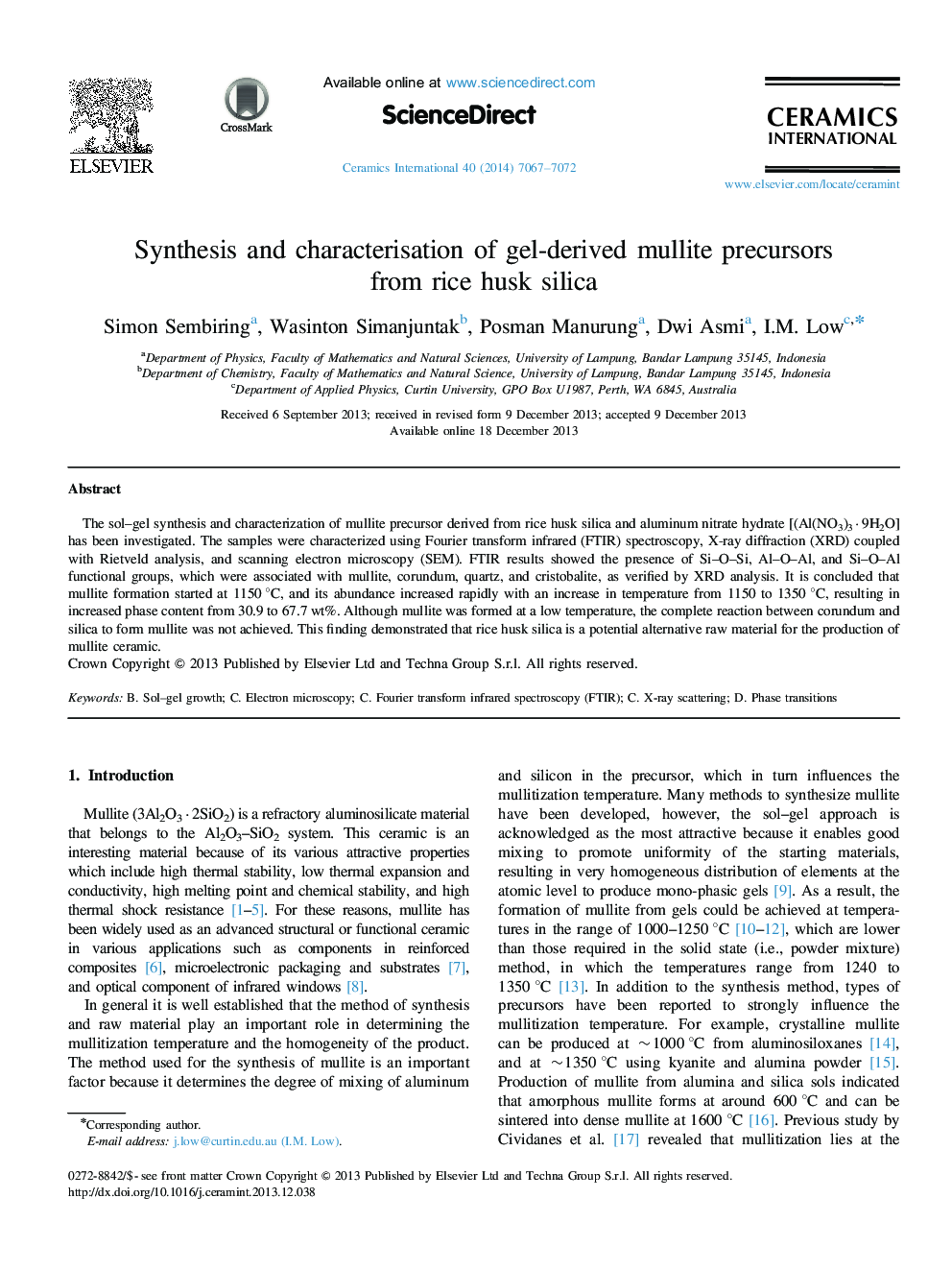| Article ID | Journal | Published Year | Pages | File Type |
|---|---|---|---|---|
| 1461171 | Ceramics International | 2014 | 6 Pages |
The sol–gel synthesis and characterization of mullite precursor derived from rice husk silica and aluminum nitrate hydrate [(Al(NO3)3·9H2O] has been investigated. The samples were characterized using Fourier transform infrared (FTIR) spectroscopy, X-ray diffraction (XRD) coupled with Rietveld analysis, and scanning electron microscopy (SEM). FTIR results showed the presence of Si–O–Si, Al–O–Al, and Si–O–Al functional groups, which were associated with mullite, corundum, quartz, and cristobalite, as verified by XRD analysis. It is concluded that mullite formation started at 1150 °C, and its abundance increased rapidly with an increase in temperature from 1150 to 1350 °C, resulting in increased phase content from 30.9 to 67.7 wt%. Although mullite was formed at a low temperature, the complete reaction between corundum and silica to form mullite was not achieved. This finding demonstrated that rice husk silica is a potential alternative raw material for the production of mullite ceramic.
